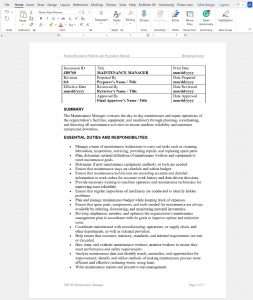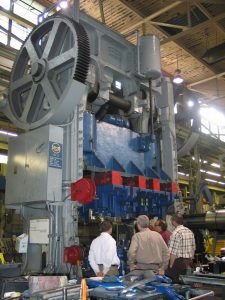What are the Responsibilities of Maintenance Manager?

Any given organization has different departments; however, the asset-intensive ones have a particular department in common — the maintenance department. What are the responsibilities of maintenance manager?
What Are The Top Maintenance Manager Responsibilities? 
The maintenance team is responsible for ensuring reliable machinery, minimizing unexpected downtime, providing faster emergency repairs, and even extending the equipment’s life. All of the activities that help with that are overseen, delegated, and planned by the maintenance manager. That being said, let’s explore the primary responsibilities of a maintenance manager and how it helps asset-intensive organizations to reduce downtime.
Primary Maintenance Manager Responsibilities
While this varies from one company to another, some common maintenance manager responsibilities are overseeing, planning, scheduling, coordinating, and assigning maintenance activities that help keep different machinery running reliably across the facility. Maintenance managers are in charge of the maintenance team — the former assigns tasks, provides feedback, monitors maintenance activities, and provides decisions regarding emergency repairs, maintenance, and improving workplace safety.

The Maintenance Manager oversees the day-to-day maintenance and repair operations of the organization’s facilities, equipment, and machinery through planning, coordinating, and directing all maintenance activities to ensure machine reliability and minimize unexpected downtime.
For instance, maintenance managers decide whether to work on an emergency request or add it to the maintenance backlog based on the asset’s priority, workload, budget, and other factors. All of these activities are done while coordinating with the management and keeping the maintenance budget and available resources in mind.
While that was maintenance manager responsibilities in a nutshell, some of the common ones seen across organizations are as follows:
- Supervise, schedule, and provide feedback to all maintenance-related activities
- Manage a team of maintenance technicians who carry out the different tasks such as cleaning, lubrication, inspections, servicing, providing repairs, and replacing spare parts
- Ensure that maintenance activities are executed as per the organization’s policies, industry regulations, and guidelines provided by regulatory bodies (OSHA, for instance)
- Ensure that critical machinery is working reliably
- Ensure that maintenance technicians are recording accurate and detailed information in work orders for accurate work history and data-driven decisions
- Provide necessary training to machine operators and maintenance technicians for improving company asset reliability
- Ensure that regular inspections of machinery are conducted to identify hidden problems and improve workplace safety
- Plan and manage maintenance budget while keeping track of expenses
- Ensure that spare parts, components, and tools needed for maintenance are available at all times by ordering, forecasting, and monitoring said materials
- Develop, implement, monitor, and optimize the organization’s maintenance management plan in accordance with its goals to improve uptime and minimize costs
- Coordinate with complex emergency repairs if needed
- Identify and hire subcontractors who focus on specialized maintenance activities
- Identify new avenues for improving productivity while reducing costs
- Generate maintenance reports whenever required
- Communicate and maintain a healthy relationship with other departments for smoother operations
Maintenance Managers Help Organizations in Several Ways
As can be seen, maintenance manager responsibilities can be overwhelming as there are so many of them, but they are manageable. Thanks to technology, several tools and resources are out there that can help maintenance managers with their job. For instance, CMMS software solutions are available that can simplify maintenance tasks, repairs, and coordination.

Manufacturing Policies Procedures documents.
If the maintenance managers use the various tools and resources at their disposal properly, they can ensure that the organization’s machinery runs smoothly, provides reliable performance, helps reach deadlines, and even extends its life. That’s not all, though — effective maintenance management also has other benefits — it reduces workplace safety incidents, reduces costs, and minimizes bottlenecks that hamper production, improving the bottom line in the process.
Maintenance Manager Responsibilities
Maintenance management has always been a crucial part of asset-intensive organizations. Still, as most organizations nowadays require machinery for daily operations, it is also becoming a significant part of small to medium enterprises effort to measure and improve efficiency. When machinery is well-maintained, organizations can carry out their crucial processes effectively without unplanned interruptions slowing them down thanks to the maintenance manager doing their job.
Author Bio: Salman Rashid is an avid reader, enjoys writing, and loves all things related to technology, especially PCs and smartphones. He’s also a Senior Digital Marketing Analyst at CloudApper and responsible for CloudApper CMMS, a solution for simplifying asset repairs & preventative maintenance.















Leave a Reply